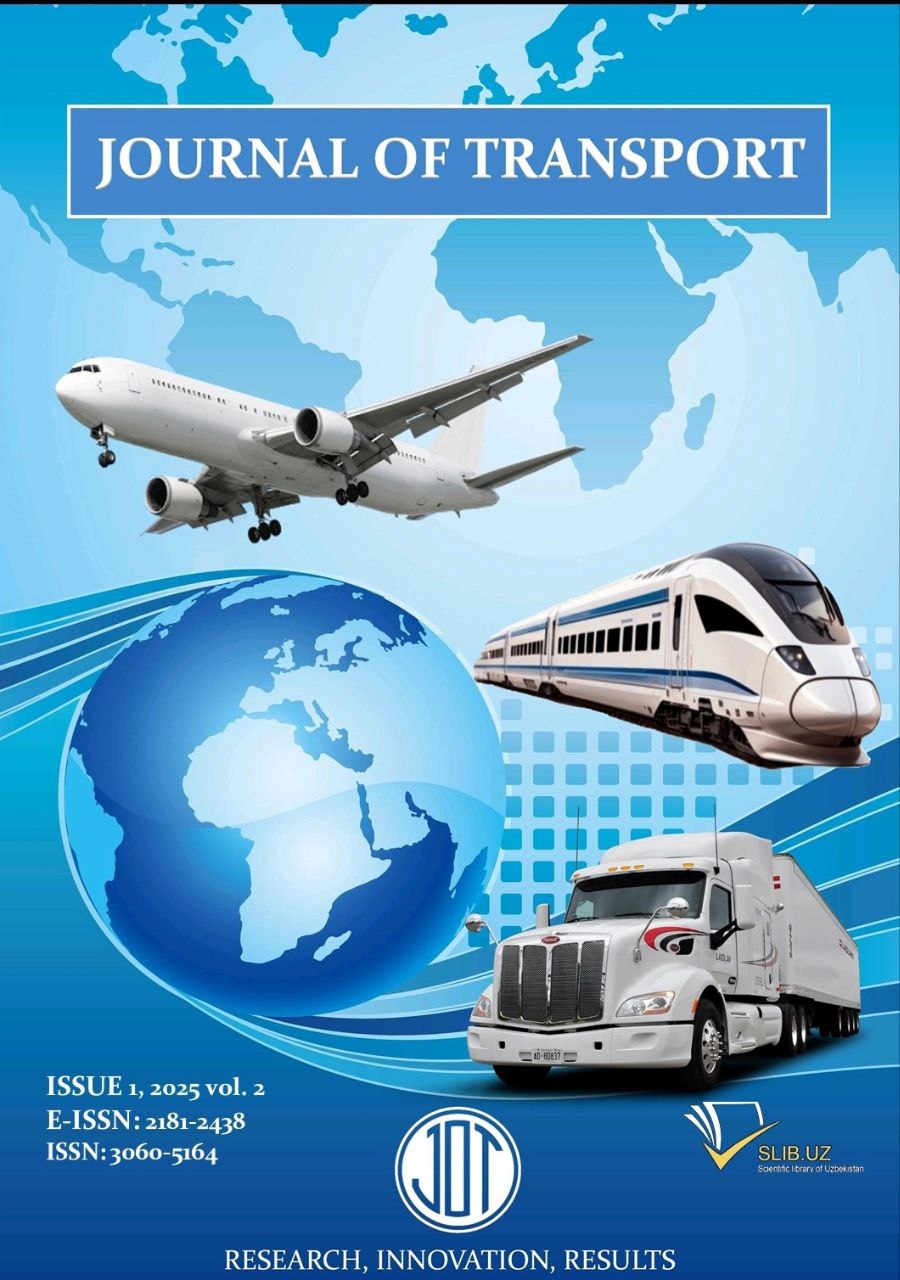Development of a traffic flow prediction and analysis model based on the Kolmogorov-Arnold Network (KAN) architecture
Abstract
This research study examines architectures and models for predicting and analyzing road traffic flows, with a focus on the Kolmogorov-Arnold KAN architecture. The study highlights the differences between this architecture and traditional machine learning architectures and compares their effectiveness. The main theorems and formulas of the KAN architecture are presented, and their theoretical foundations are explained. The results obtained based on the KAN model are reviewed during the study, and conclusions are drawn from these results. During the training process, the model showed 87% accuracy, while its accuracy in real-world predictions was found to be in the range of 87–90%. As a result, the researchers put forward the issue of further improving the KAN model and identified future development directions.
References
[2] Ibrohimjonovna D.M. TRANSPORT TIZIMIDA INTELLEKTUAL BILIMLARNI QO‘LLASH SALOHIYATI // Ta’lim innovatsiyasi va integratsiyasi. 2024. Vol. 12, № 2. P. 160–164.
[3] Chen C. et al. Traffic Flow Prediction Based on Deep Learning in Internet of Vehicles // IEEE Trans. Intell. Transport. Syst. 2021. Vol. 22, № 6. P. 3776–3789.
[4] Boukerche A., Tao Y., Sun P. Artificial intelligence-based vehicular traffic flow prediction methods for supporting intelligent transportation systems // Computer Networks. 2020. Vol. 182. P. 107484.
[5] Belhadi A. et al. A recurrent neural network for urban long-term traffic flow forecasting // Appl Intell. 2020. Vol. 50, № 10. P. 3252–3265.
[6] Oliveira D.D. et al. Forecasting vehicular traffic flow using MLP and LSTM // Neural Comput & Applic. 2021. Vol. 33, № 24. P. 17245–17256.
[7] Hussain B. et al. Intelligent Traffic Flow Prediction Using Optimized GRU Model // IEEE Access. 2021. Vol. 9. P. 100736–100746.
[8] Wang S. et al. Truck Traffic Flow Prediction Based on LSTM and GRU Methods With Sampled GPS Data // IEEE Access. 2020. Vol. 8. P. 208158–208169.
[9] Liu Z. et al. KAN: Kolmogorov-Arnold Networks:arXiv:2404.19756. arXiv, 2024.
[10] Vaca-Rubio C.J. et al. Kolmogorov-Arnold Networks (KANs) for Time Series Analysis: arXiv:2405.08790. arXiv, 2024.
[11] Genet R., Inzirillo H. TKAN: Temporal Kolmogorov-Arnold Networks: arXiv:2405.07344. arXiv, 2024.





